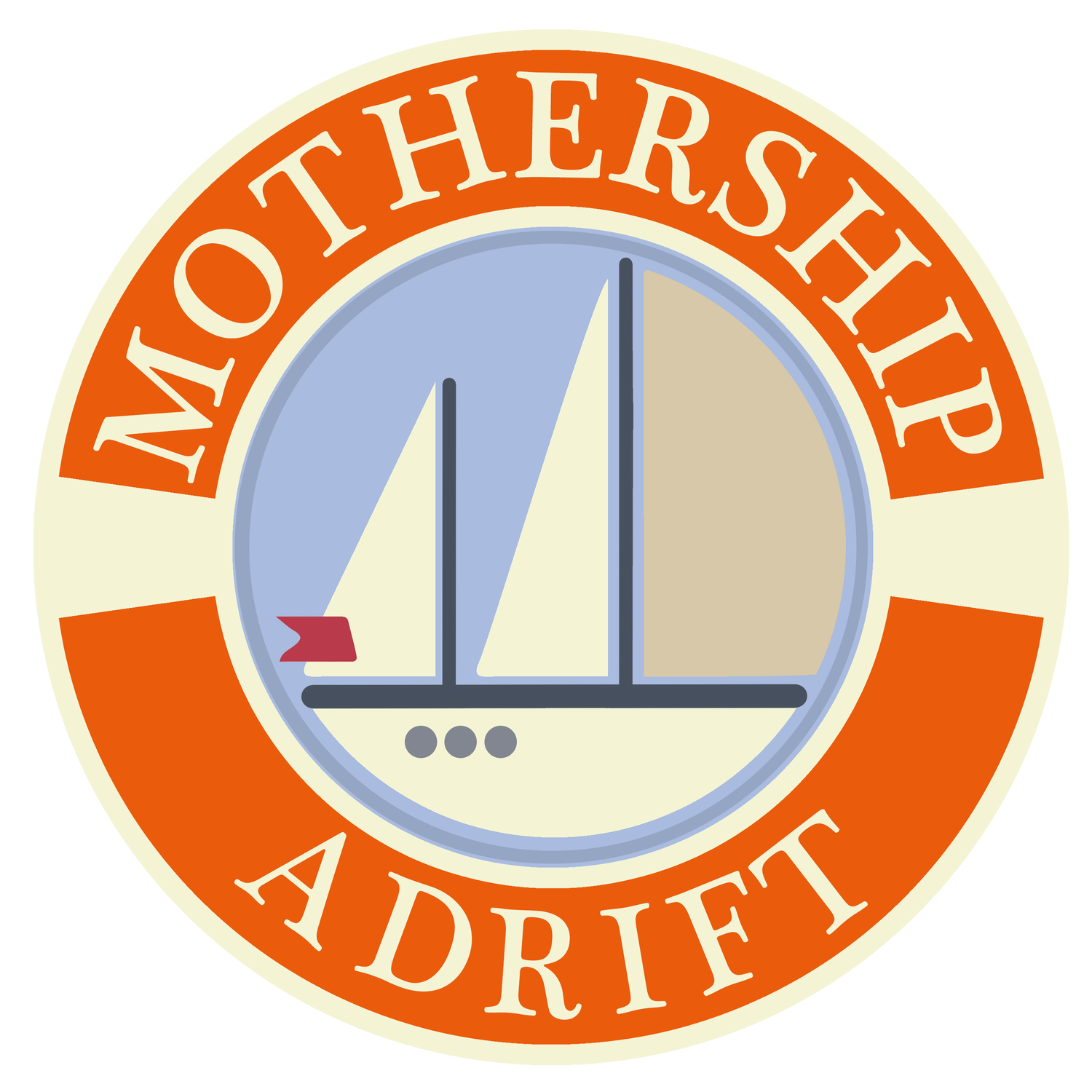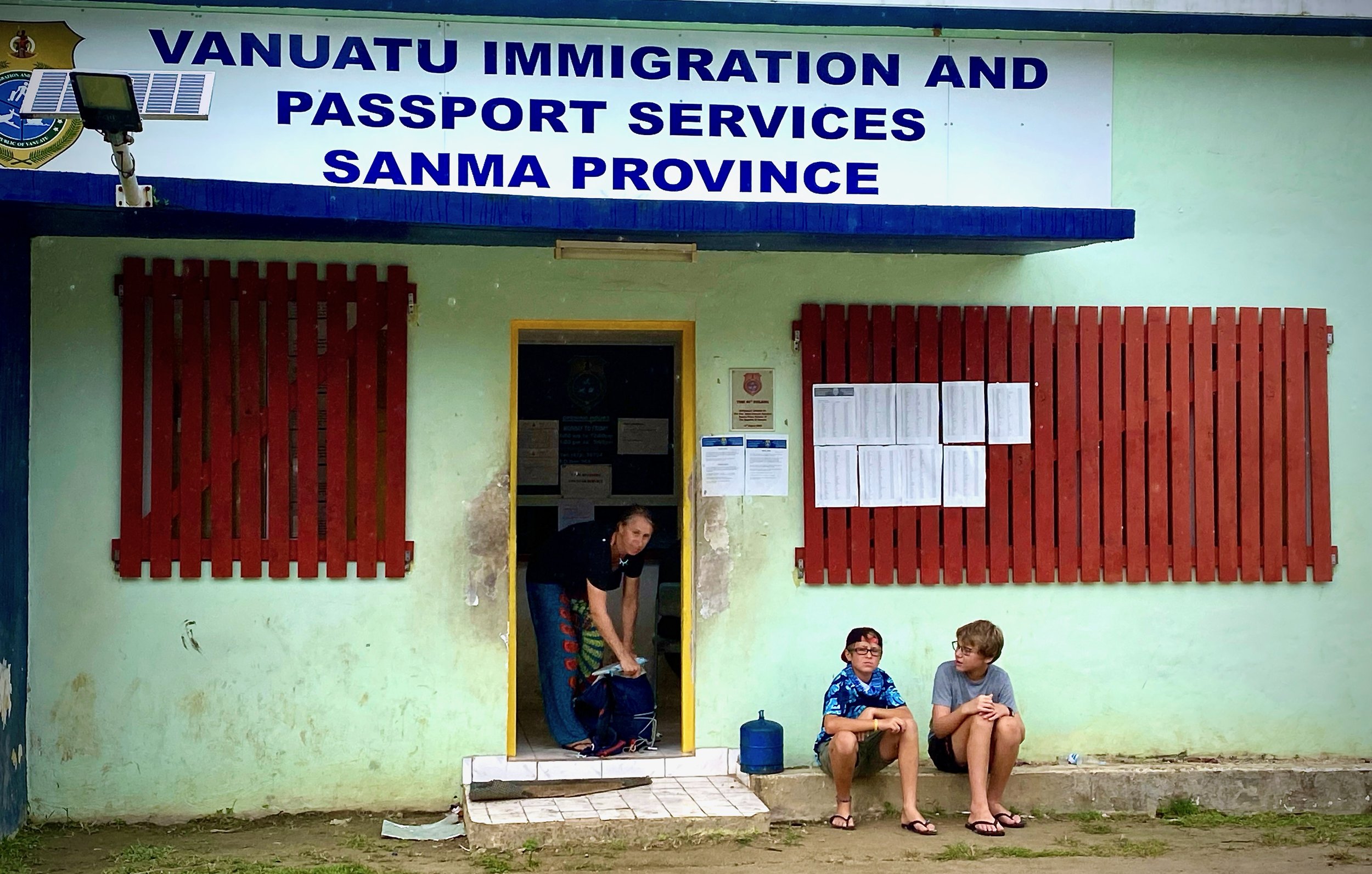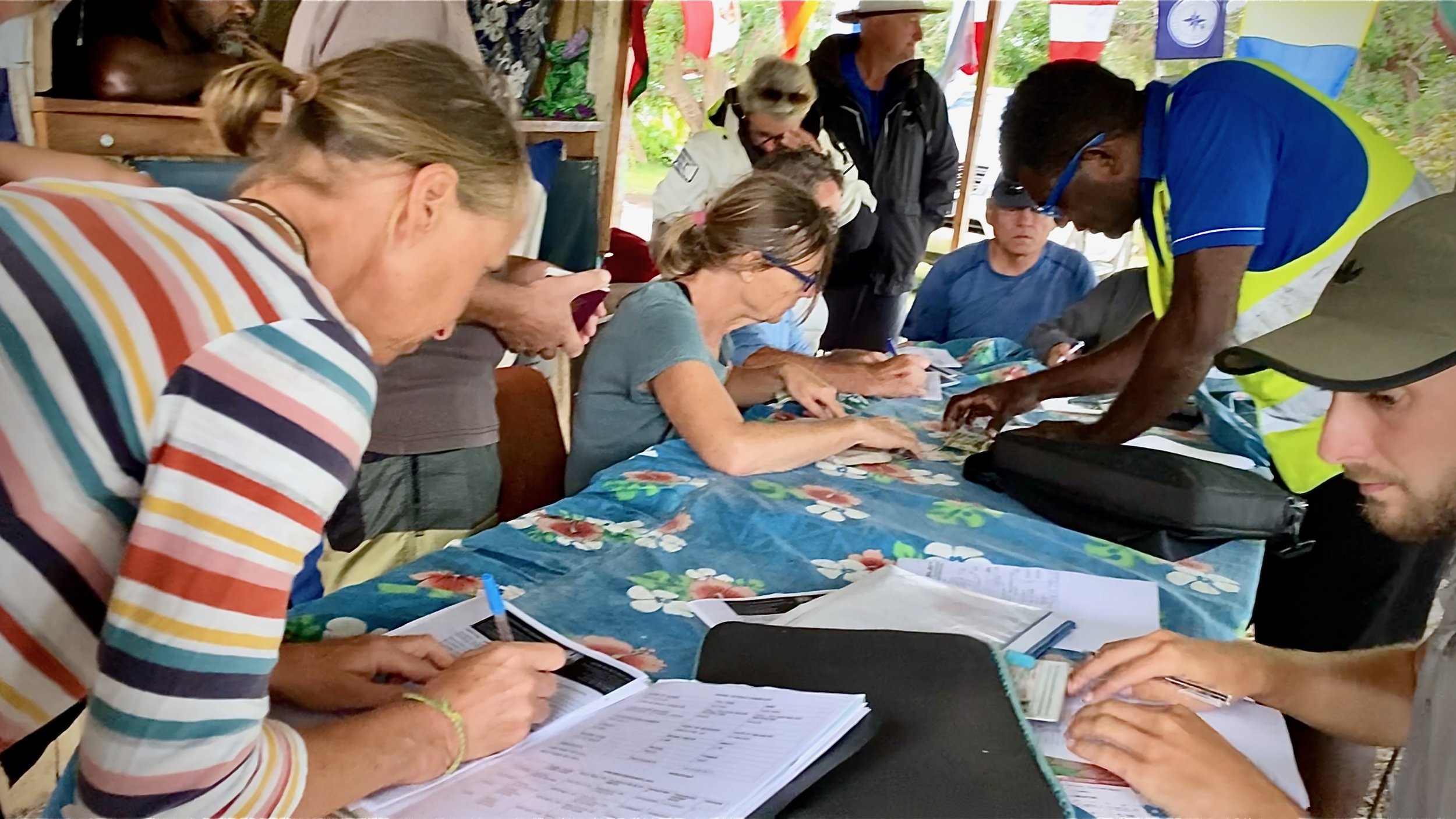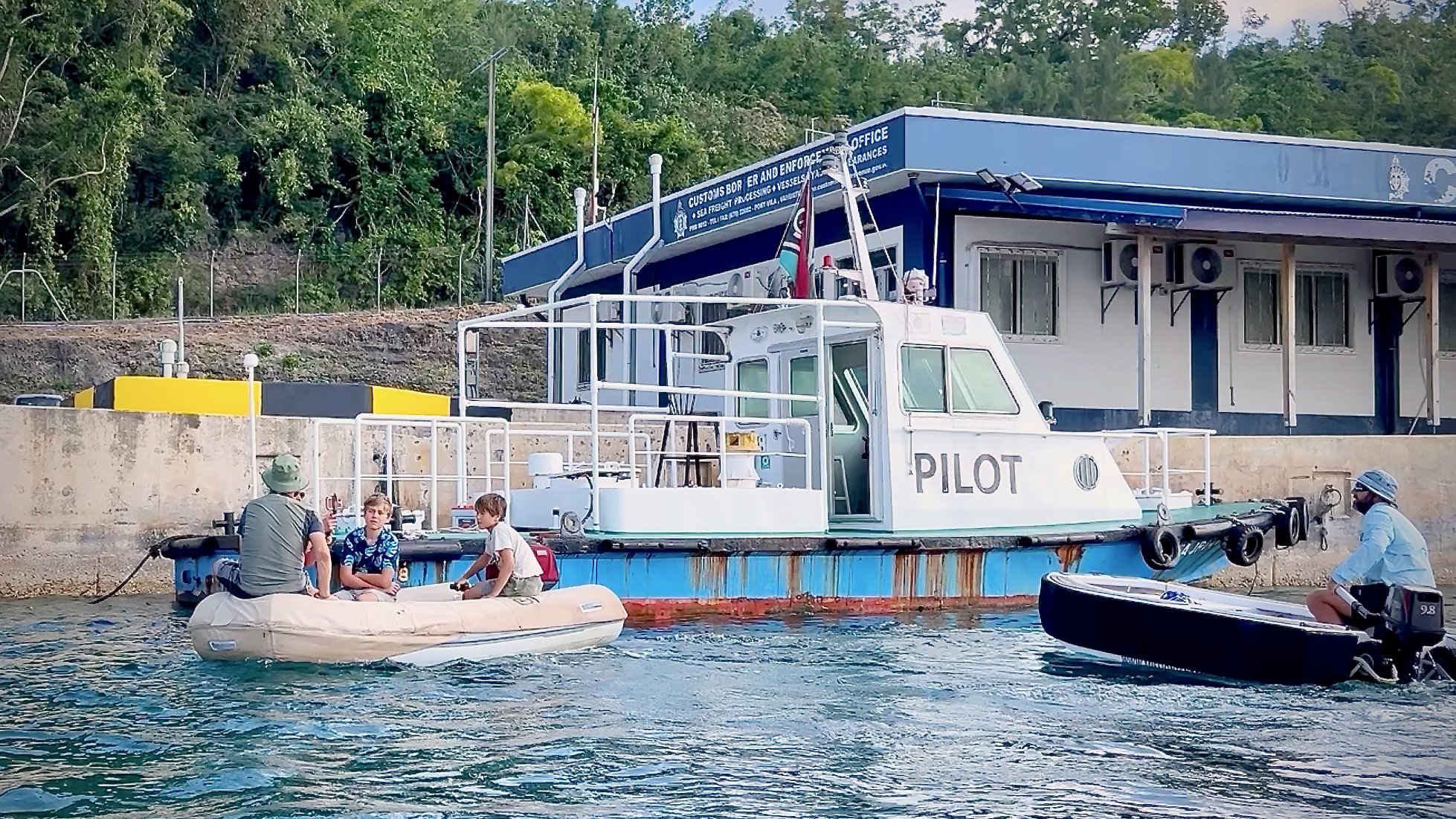Clearing-In to Foreign Countries Pt:01 - Overview
01-04-01
“Paperwork is the embalming fluid of bureaucracy, maintaining an appearance of life where none exists. ”
The boys waiting outside the Immigration and Passport Office. Vanuatu.
Bureaucratic Waters
Personally, I loathe bureaucracy, paperwork, and the inefficiencies of government officialdom. I didn’t “sell up and sail away” only to spend time filling in forms in grim government offices around the world. In many cases, checking in (or “clearing in,” as it is more appropriately termed) seems to be nothing more than a self-financing job creation scheme. So, I grit my teeth and consider it part of a lengthy and expensive philanthropic contribution to the local economy.
The Complexities of Clearing In
Clearing in involves several government agencies that, in theory, collaborate to manage the arrival and clearance process for boats. In practice, however, you may have to deal with these agencies as separate entities. Often, the entire crew (kids included) must present themselves in person. The process varies in every country and can sometimes be extremely confusing and convoluted.
Clearing in can be confusing and convoluted and involve several government agencies. Often, the entire crew (kids included) must present themselves in person. - Lefkas, Greece. (010: Liveaboards! - Our First Week. Getting a Greek Cruising Permit and Living on a Boat)
Thriving Amid Chaos
However, Irenka positively thrives on the chaos and adventure sometimes associated with clearing in. She leans into the process and, to be honest, the novelty of a female skipper (especially one with kids) can sometimes expedite the whole procedure. I’m more than happy to take a back seat when it comes to this particular task, although it can be worrying at times.
For example:
In Tunisia, Irenka was whisked away on the back of a moped by a random dockworker as soon as we arrived, to obtain documented permission from the Tunisian Armed Forces.
In Vanuatu, she undertook a day-long off-road expedition (on roads destroyed by a recent cyclone) over an active volcano to the other side of Tanna Island.
In Greece, government agencies don’t accept payments directly. After submitting the initial application for a cruising permit, we were directed to a bank to make payments and then had to return to the office with the receipt to receive our official clearing-in and cruising permit stamp.
In Turkey, we had to procure a “Blue Card” and have it periodically inspected by the coastguard to prove we’d been pumping out wastewater at designated facilities. The fact that these facilities hardly worked didn’t seem to deter the bureaucrats. So, we went through the charade of pretending to have our waste tanks emptied to receive an official stamp.
In the Marquesas, even though we were traveling through the islands by boat, we had to present valid plane tickets to the police to prove we had a legitimate means of leaving the country.
In Indonesia, we were told we needed a government-issued “green book” that had to be stamped at every port. Yet, at those ports, officials claimed the book wasn’t required. That is, until we tried to clear out, whereupon an enterprising official happened to have ‘green books’ at inflated prices. Despite it being our last port of call, we were required to buy one from him.
In the ex-Dutch colony of Suriname, we had to hire a specific taxi driver who took us on a whirlwind tour of various government agencies in Paramaribo, including both the local and national police. Ironically, when we needed a crew change two weeks later, our paperwork couldn’t be found and had to be refiled. I was also berated for wearing shorts and sandals in a government office. Priorities, right?
Don’t even get me started on the Galapagos Islands. By now, you probably get the picture.
Irenka and other cruisers beginning the clearing in process in Vanuatu. The day after she had to travel across Tanna island by 4x4, over an active volcano to complete the process which took an entire day.
The Bureaucratic Maze
There is a bewildering array of permits, forms, formats, and procedures, each with wildly differing fees. To add to the confusion, the same document in one country can be called something entirely different in another. For instance, a “Crew List” might be an “Incoming Passenger Card,” a “Forma Migratoria Múltiple,” or a “Sailing Crew Information Form” elsewhere. It might even be incorporated within an Advance Notification Form… which itself might have different names depending on the country. Just take a deep breath and reach deep down for the resilience to carve through the Kafkaesque bureaucracy you will inevitably face.
But don’t panic. Most of the information requested involves core details you should already have at hand, which just need to be regurgitated onto the right form. Fortunately, English is the universal language of the sea, business, and commerce. Official forms are mostly in English, and many government officials speak at least some English.
Clearing Agents
As you can see, clearing in is a dynamic process requiring resourcefulness and adaptability. However, help is at hand. Professionals known as “Clearing Agents” or “Customs Brokers” can assist with these complexities in some countries. These agents are well-versed in local regulations (or have relatives in immigration) and can streamline the clearance process. However, their services come at a premium, and not all agents are trustworthy. You’ll still need to supply the correct boat paperwork and information, so using an agent doesn’t negate the need to be organised—it just makes the process smoother.
Agents can streamline the clearance process, however, not all agents are trustworthy. Get personal recommendations. - Extract from an Indonesian Whatsapp group.
If you’re new to cruising, consider joining organised rallies that provide clearing-in agents as part of their support network. While rallies impose schedules and can be expensive, they offer a ready-made fleet of buddy boats and a list of excursions, parties, and events in each country. We rarely use agents, but in some countries, they are essential or even mandatory.
For example, when we arrived in the Galapagos Islands after a gruelling 10-day sail from Panama, nine officials (yes, NINE) from various agencies boarded our boat at once. A diver inspected the hull, and we “failed” clearance on several issues that weren’t specified online and were impossible to comply with anyway. Thankfully, our clearing agent helped us circumvent the more impossible requirements, smoothed the process, and within 24 hours, we were safely cleared in.
Clearing-In Before You Depart
Most countries require an “advance notice of arrival,” with approval needed before setting off. As most procedures involve government agencies, allow enough time to follow up if confirmation is delayed (which is common). If your crossing takes several weeks, begin preparation months in advance.
Vaccinations
Some countries require vaccine certificates for immunisations like Yellow Fever and Hepatitis A, which may require multiple doses or a waiting period for immunity to develop. Factor this into your timeline before departure.
Friendly Gesture or Biohazard!
Also, familiarise yourself with local customs and procedures. A friendly gesture, like offering a ham sandwich and cup of tea, might be greatly appreciated in one country but considered a grave insult or a biosecurity hazard in another. Seriously, do your research.
Familiarise yourself with local customs and procedures: Ol Man - Comem gud hair - No Thick Mustache! - Sanma Province, Vanuatu.
Government Websites and Local Cruising Groups
While government websites are a good starting point for research, they’re not always up to date. Rules in a dusty office run by a bored clerk can differ significantly from those listed on official government websites. Websites like Noonsite.com, local Facebook cruising groups, and WhatsApp groups are full of useful information from cruisers with boots on the ground, such as which port of entry has the friendliest officials, how to circumvent more dogmatic or nonsensical procedures or even how to navigate the official website!
WhatsApp groups set up by cruisers with boots on the ground are significantly better informed than most officials who's job it is to clear you in! - Extract from an Indonesian Whatsapp group.
When cruising through Indonesia, immigration policy literally changed on a daily basis. Rules and fees that applied to one boat, mysteriously changed the following day for another. Without our local WhatsApp group it would have been impossible to keep up. Bored officials seemed more intent on beating their personal best on ‘Mobile Legends: Bang Bang’ on their phones than helping cruisers navigate the complexities of the clearing-in process. The onus is on you.
Protect Your Documents
Clearing in often involves taking important documents on wet dinghy rides, long trips across town, and handing them over to careless officials. Laminate essential papers and organise them in a waterproof folder with clear plastic sleeves. Bring several photocopies and digital backups, as you can sometimes be charged a “fee” for officials to make their own copies.
Clearing in often involves taking important documents on wet dinghy rides. Laminate essential papers and organise them in a waterproof folder. - Port Vila, Vanuatu.
A Rite of Passage and Part of the Adventure
The clearing-in procedure can take several days if offices are closed for weekends, holidays, or if officials decide to bunk off early to go fishing. But try to embrace it as a rite of passage and part of the adventure. Then. hopefully you’ll find that even the most Kafkaesque experiences become stories to laugh at over a sundowner.
This post has already exceeded my usual word count for the week, so I’ll wrap it up here. In the next post, I’ll do my best to clarify the exact documents and information you’ll need to present during the clearing-in process, as well as the government agencies involved. While it’s not an exact science, it should give you a good idea of how to prepare yourself, your boat, and your crew for the big arrival!
And we’ll continue this series next week!
If you want more straight-talking tales from life afloat, and information on clearing in a sailboat to foreign countries, then you’ll love our upcoming book. We're inviting early readers to join the pre-launch crew and get behind-the-scenes access as we wrestle it into shape. It’s honest, unfiltered, and occasionally useful. Sign up here to get involved, give feedback, and be part of something that’ll either be a bestseller or a brilliant cautionary tale.








